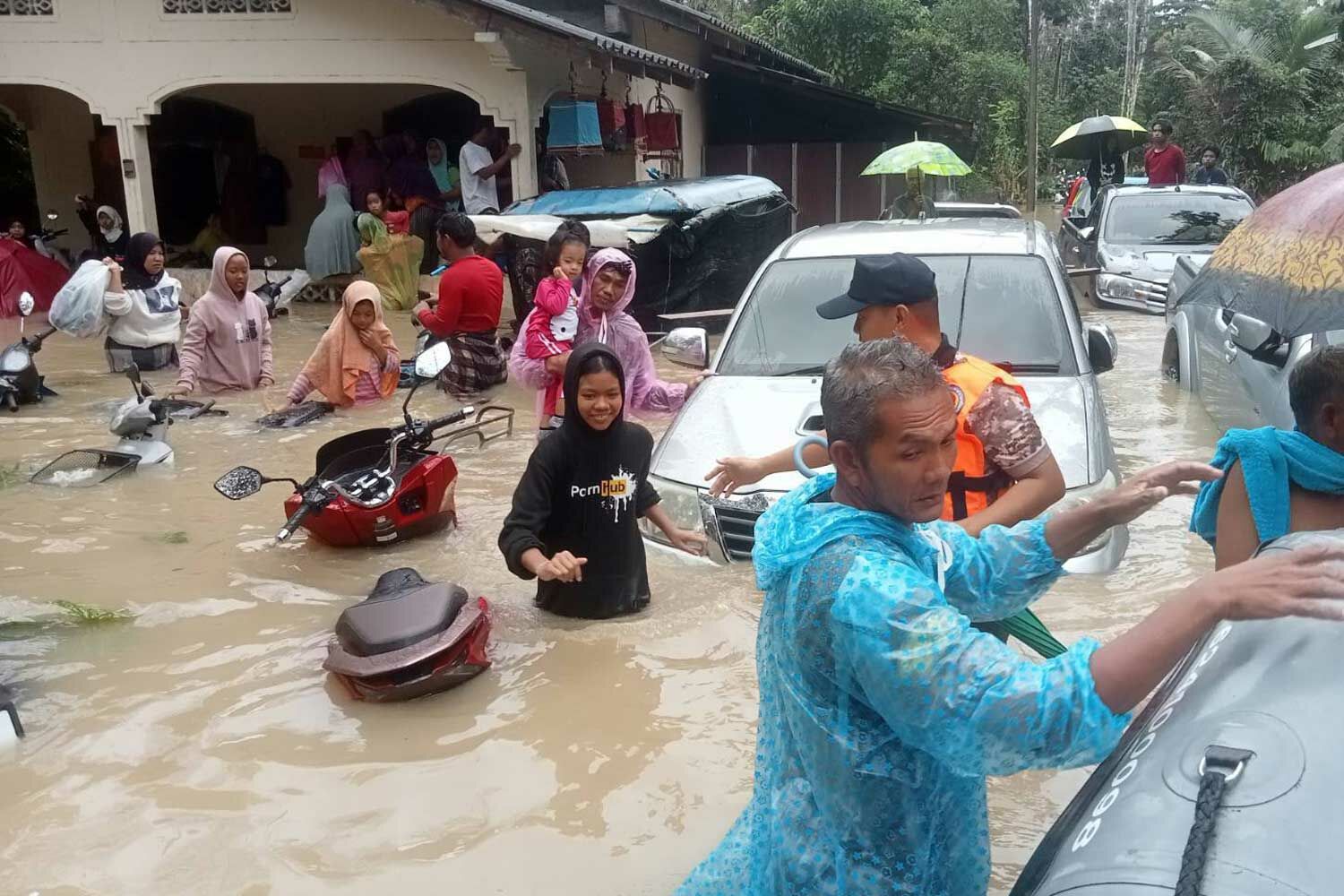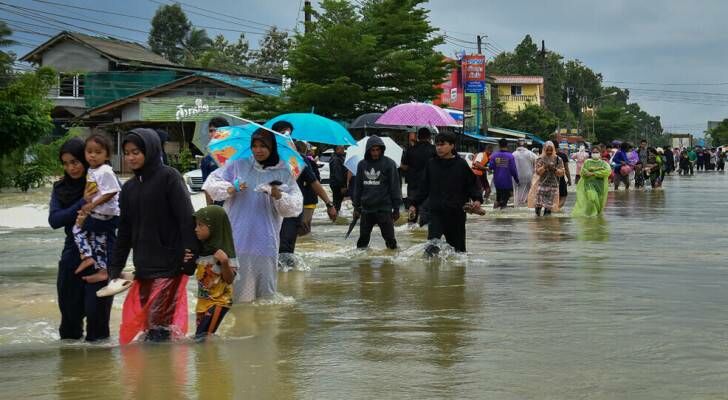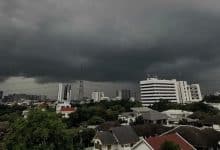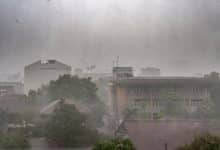Southern Thailand is drowning in Mother Nature’s flooding fury

The southern Thai provinces of Songkhla, Pattani, Yala, and Narathiwat are reeling under the wrath of Mother Nature as heavy rain and severe flooding bring daily life to a grinding halt. Schools have been forced to shut their doors, and once-bustling roads lie underwater, leaving communities stranded as they battle the relentless downpour.
The heavens have opened with a vengeance, flooding critical routes like the vital Kanjanavanich Road that links Hat Yai to Muang district. Desperate local government officials have had no choice but to close parts of the road, sending drivers on a wild detour via Lopburi Ramaed Road in a desperate bid to keep the traffic flowing.
Education chaos is unfolding in Songkhla, with flash floods forcing Taveerat School, Hat Yai Wittayalai 2, and Hat Yai Wittayalai Somboonkulkanya to cancel classes. Tambon Ban Pru is bearing the brunt of the deluge, where water has surged past a worrying 1.5 metres, submerging a 300-metre stretch of road and leaving around 250 residents and 100 homes at the mercy of the rising tide.
Aid is on hand, though, as Hat Yai City municipality sets up flood relief centres at tambon Ban Rai and Ban Khlong Pom School to help those evacuated. The community rallies with ongoing sandbag distributions at Jiranakorn Stadium and Hat Yai City Municipal Park, just don’t forget to bring your ID to claim yours!
It’s an educational nightmare in Narathiwat, where Ban Yaho School is indefinitely shuttered, with water levels peaking at a staggering 90 centimetres. With five districts in the crosshairs, the Narathiwat Primary Education Service Area Office 2 has sprung, demanding all schools devise emergency strategies against this watery onslaught.
In a grim echo of the past, Yala faces its worst flooding in 20 years. Downtown Mueang district areas like tambons Sateng Nok, Tha Sap, and Budi are drowning, sparking urgent warnings from Yala City municipality for residents to move prized possessions to higher ground — before it’s too late!

Residents near the threatening Sai Buri River are on high alert, as fears mount over possible overflows.
Meanwhile, the Public Health Ministry is keeping a vigilant eye on 113 vital hospitals and clinics in these stricken provinces, vowing to keep medical services up and running until Saturday and ready to combat any disruption.
According to the Thai Meteorological Department, this deluge will not stop anytime soon. Eastern parts should brace for more heavy rainfall, thanks to a formidable northeast monsoon and low-pressure system, set to last through Saturday.
Adding to the chaos, rail services face a crisis as floodwaters halt all trains bound for Pattani, Yala, and Narathiwat at Hat Yai Junction, leaving tracks beyond impassable in this watery ordeal.

What Other Media Are Saying
- ReliefWeb reports severe flooding across Thailand, impacting over 800,000 people and resulting in numerous casualties. Ongoing government and humanitarian responses aim to address the urgent needs of affected communities. (read more)
- Bangkok Post reports severe flooding in Trat province, with five schools closed and residents trapped, highlighting the urgent need for effective disaster management and community support in crises. (read more)
Frequently Asked Questions
Here are some common questions asked about this news.
Why is the southern region of Thailand particularly vulnerable to severe flooding?
Geographical features and monsoonal climate contribute to frequent flooding in southern Thailand, making it susceptible to heavy rains and flash floods.
How might prolonged flooding impact the education system in affected Thai provinces?
Extended school closures due to flooding disrupt education, affecting students’ learning progress and potentially delaying academic schedules.
What if the floodwaters continue to rise beyond current predictions?
Further rise in floodwaters could lead to increased evacuations, infrastructure damage, and strain on emergency response resources.
How do communities adapt to recurring flooding events in Thailand?
Communities implement flood relief measures, such as sandbag barriers, evacuation centres, and emergency planning, to mitigate the impact.
What measures are being taken to ensure healthcare access during the floods?
The Public Health Ministry monitors flood-prone hospitals, ensuring they remain operational and implementing measures to address disruptions.
Latest Thailand News
Follow The Thaiger on Google News:


























